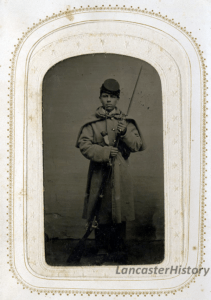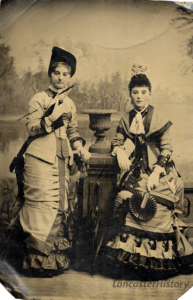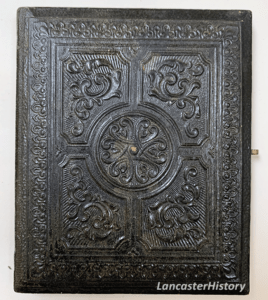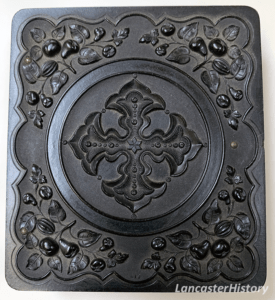Just In Case | Save Your Photos Month
This entry is a part of a series celebrating of September’s Save Your Photos Month. Stay tuned for more!
Perhaps the most delicate and difficult to care for among historic photographic images are what are often referred to as “cased images” – Daguerreotypes, ambrotypes, and tintypes. They’re also some of the oldest types of photographic images. Carefully housed in small cases, these are images produced on metal or glass and should be handled with utmost care.
Daguerreotypes
Daguerreotypes were the first successful and commercially viable photographic images. The process for producing them was introduced by Jacques Mande Daguerre in France in 1839. The images were created on highly polished silver coated copper through several chemical processes before drying over a flame. The process was lengthy and, often, costly. Despite, this, they were popular until the late 1850s. Daguerreotypes are often identified by their mirror-like quality.
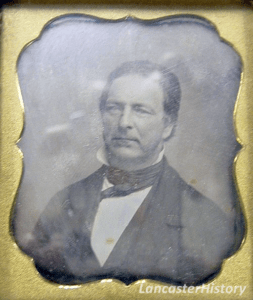
Ambrotypes
Ambrotypes were introduced in the early 1850s. Though they were cheaper to produce than daguerreotypes, they were more fragile, as they were images produced on glass coated with light sensitive chemicals. The image was backed with dark paper or cloth before being placed in a case. This gave the image a positive look. Sometimes rosy tinting was added to cheeks or gilt to jewelry in the images. Ambrotypes to do not have the mirrored appearance of daguerreotypes. They remained popular until about 1880.
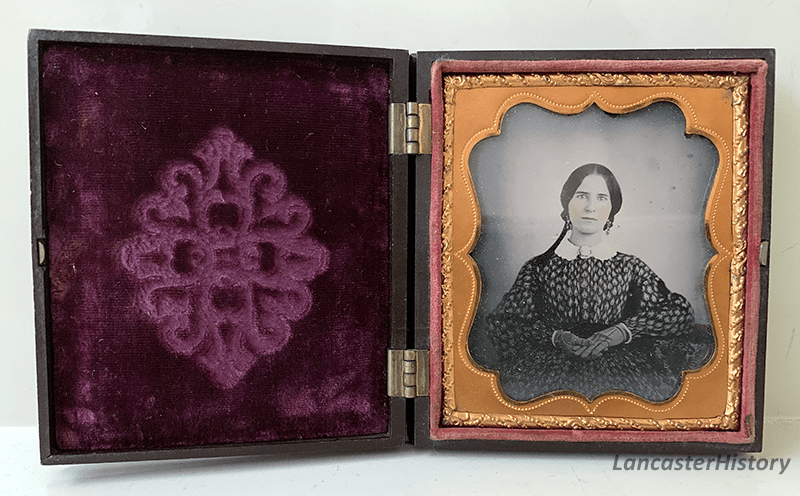
Tintypes
Tintypes were the cheapest and easiest to produce of these early, direct positive images. Also called ferrotypes, these images were produced on sheets of tin or iron that were shellacked. The process was developed by Hamilton L. Smith of Kenyon College, Ohio in 1856. They were also popular with Civil War soldiers who would pose in uniform and send them back to their friends and families. Tintypes remained popular novelty items well into the early part of the twentieth century. The metal images could withstand much of the ravages of time, but if exposed to light or the elements, can darken or rust or risk loss of emulsion (the photographic layer).
Casing
Daguerreotypes and ambrotypes were housed in cases made of tooled leather over wood, some were quite decorative. In 1854, the thermal plastic “Union Case” was introduced and was much more durable than leather. Tintypes were not often cased, but usually came in a paper mat or frame. Plates for all three came in various sizes ranging from a whole plate (8.5 x 6.5 inches) to a sixteenth plate (1 3/8 x 1 5/8 inches). The most common were quarter plates ( 3.25 x 4.25 inches) or sixth plates (2.75 x 3.25 inches).
Preservation
These types of images were usually meant to be mementos, not necessarily displayed. If you do wish to display one, perhaps think about using a reproduction. Also, remember to store the originals in a climate controlled environment. In other words, not your basement or attic or garage. This will save the original from exposure to direct light and preserve it for future generations.
Photos in the News
You may have heard of the Smithsonian’s recent acquisition of historic photographs by early African American photographers such as James P. Ball, Glenalvin Goodridge, and Augustus Washington. This collection of 286 photographs, which is comprised of daguerreotypes and other early photographic works, spans from the 1840s to 1925. The photos feature both Black and white individuals and provide a fascinating look into the work done by early African American photographers (Boyd).
Daguerreotypes were widely popular in the 1840s and 1850s and it’s estimated that 3 to 5 million were made in the United States. But only 30,000 to 40,000 still exist. That number is even smaller for the daguerreotypes that came from these first African American studios, which number around 166 for Ball, Goodridge and Washington, according to the Smithsonian. – Sophia Alvarez Boyd, NPR
To read more about this recent acquisition and view some of the photographs, you can check out the article on NPR, “Smithsonian Acquires Rare Antique Portraits By First Black Photographers.” Photographs are still revealing information to us about American history many years later!
From PhotoBlog
